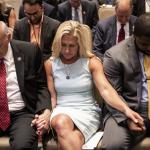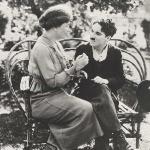Not long ago, I visited Topeka, Kan., to teach at one of those grand old mainline churches that got caught in the aftermath of Brown v. Board of Education.
It was around the corner from the modest home of a railroad worker named Oliver Brown who decided his daughter Linda shouldn’t have to attend an elementary school far from home just because the neighborhood school was for whites only.
The Supreme Court agreed and, in 1954, struck down the “separate but equal” doctrine that had allowed segregation in public schools. That decision set in motion the mass exodus of whites from urban neighborhoods.
So-called “white flight” suburbs sprang up just outside the borders of newly integrated school districts. New schools went up to attract white families, as did housing developments promising a better way of life, code for “whites-only.”
Some mainline congregations followed their white constituents out to the suburbs. Others stayed in beloved Gothic piles and, like the one I was visiting, tried to retain a former way of life while surrounded by new neighbors who didn’t identify with grand old hymns, starchy Sunday rituals and an attitude of charity, not welcome.
Read the rest here















